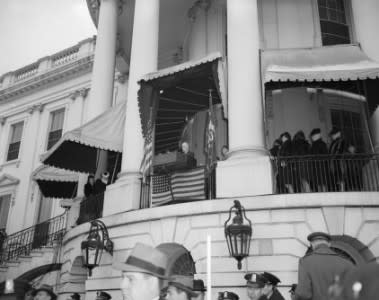Today in constitutional history: Presidents are limited to two terms in office
On February 27, 1951, the 22nd Amendment was ratified, blocking any President from serving more than two terms or 10 years in office. So why was there a big push for tenure for the chief executive?
The answer was tied to two Presidents: George Washington and Franklin D. Roosevelt.
It was George Washington who established the custom of Presidents serving no longer than two terms. Several Presidents tried for a third term in office, but none were successful until Roosevelt’s re-election to a third term in 1940.
After Roosevelt’s death and as the Republicans controlled Congress, the test of the 22nd Amendment was approved by the House and the Senate, and sent to the states for ratification.
The first president, Washington, set the two-term precedent in 1796, when he decided to pass on a third term, setting up a scramble between John Adams and Thomas Jefferson in the fall race.
Washington’s voluntary decision to decline a third term was also seen by many people as a safeguard against the type of tyrannical power yielded by the British crown during the Colonial era.
Roosevelt’s decision to break the precedent set by George Washington was made in July, 1940, as the United States neared its entry into World War II.
The third-term decision dominated his election campaign against the Republican contender, Wendell Wilkie. In the end, Roosevelt won the election by a wide margin, and he was able to win a fourth election in 1944.
But the popular fallout about the concept of a long-term president led to the ratification of the 22nd amendment in 1951.
“No person shall be elected to the office of the President more than twice, and no person who has held the office of President, or acted as President, for more than two years of a term to which some other person was elected President shall be elected to the office of the President more than once,” the amendment read, in a clear reference to Roosevelt.
So why were people so upset with Roosevelt’s decision to seek a third term, and even more people opposed enough to approve a constitutional amendment?
Franklin Roosevelt wasn’t even the first Roosevelt to seek a third term in the White House. His distant cousin, Theodore Roosevelt, ran unsuccessfully as a third-party candidate in 1912, after declining to run in 1908. President Ulysses S. Grant also sought a third term in 1880, but he lacked enough party support to get a nomination.
Talk about a presidential term-limits amendment started in 1944, when Republican candidate Thomas Dewey said a potential 16-year term for Roosevelt was a threat to democracy.
In March 1947, a Republican-controlled Congress approved a 22nd Amendment, with an exception that would exclude a president in office from term limits during the ratification process.
It took until February 1951 to get enough states to ratify the amendment, and President Harry Truman decided to opt against running for a third term.
Since then, some members of Congress have introduced efforts to repeal the 22nd Amendment, but they haven’t made it out of committee.
Recent Stories on Constitution Daily
If Abraham Lincoln had died 1861, who would have replaced him?
Five “unusual” amendments that never made it into the Constitution


